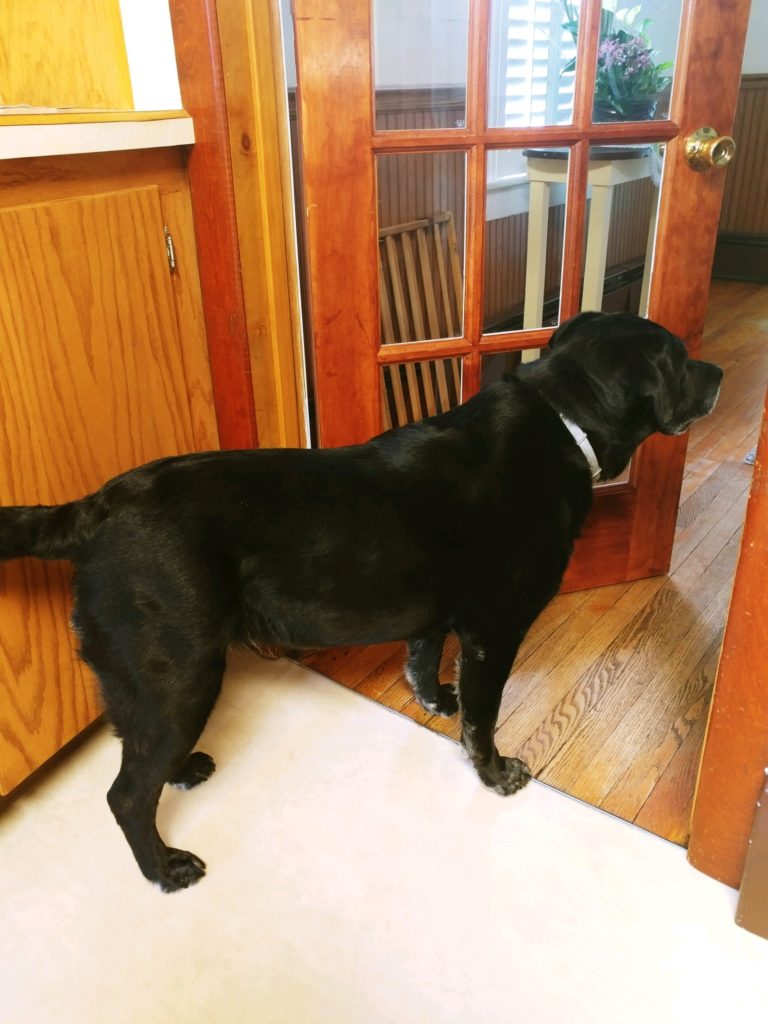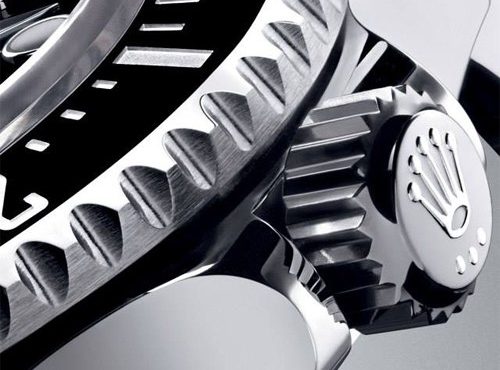The winding crown on Rolex watches is made up of about 10 parts, and is screwed hermetically onto the watch case. This is how Rolex, for the first time in the history of watchmaking, created a waterproof winding crown — a secure interface between the protected, sealed world inside the watch and the harmful elements of the outside world.
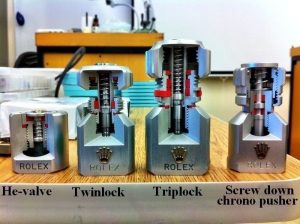
Even with a solid case and bullet-proof crystal, the Achilles’ heel of any watch is the winding stem. The winding stem is used to both set the watch’s time and date, as well as to wind the watch.
Unfortunately, the winding stem opens the case to dust and potential water penetration. Even with a solid case, the crown and winding stem present opportunities for water and dust to enter the case.

As part of his Oyster case design, Hans Wilsdorf also patented the screw-in crown. The advantage of the screw-in crown is the ability for it to seal against a rubber gasket. Although some crowns already possessed some type of rubber seal, the combination of a threaded stem compressing against a rubber o-ring made the seal much more water tight. Rolex utilizes the closing of a submarine hatch as a metaphor for describing how the threaded crown works.
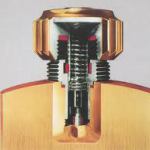
Rolex has two type of crowns, depending on the water resistance required for the watch. Rolex Twinlock and Triplock winding crowns use two or three sealed zones to ensure watertight security for the watch movement. The majority of the Rolex line utilizes the Twinlock Crown.
Twinlock
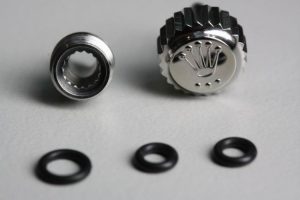
Twinlock crown is identified by a simple dash (-) or two dots (..) below the Rolex five-pointed logo crown. The Twinlock crown is rated to be water tight to 100m/300ft. The Twinlock crown system has two rubber gaskets; one located inside the actual crown that compresses against the threaded tube attached to the watch case, and another rubber gasket that is located inside the watch tube.
These two gaskets -one under compression from the watch crown, and another inside the tube encompassing the winding stem, prevents water and dust from penetrating the case. It has been noted that the gasket inside the watch tube keeps water from penetrating the case even when the crown is unscrewed. Despite this, it is important to keep the crown always screwed onto the case.
TripLock

Triplock uses two gaskets in the tube, one outside the tube, and one underside the crown. Similar to the TwinLock system, Rolex utilizes 10 different components to insure water tightness to 300 m. TripLock crown is distinguishable by being larger than the TwinLock crown, and they have three dots below the five pointed Rolex logo crown. The TripLock system utilizes a larger case tube, and four rubber o-ring gaskets to insure water tightness.
The first gasket is viewable when the Triplock is unscrewed as it encompasses the outside of the winding tube, but is hidden just inside of the crown. Like the TwinLock crown, the second o-ring is inside the crown and is compressed against the case tube. The third and fourth gasket is located inside the case tube encompassing the winding stem. These four gaskets combined with a thicker threaded case tube insure water resistance to a depth greater that most amateur diver can descend.

These marks tell you if the crown on your watch is either a Twinlock or Triplock crown. These dots and dashes tell you both the metal content of the crown as follows
• Line = steel or yellow gold twinlock
• Two dots = white gold twinlock
•One dot = platinum twinlock
•Three small dots = steel or yellow gold triplock
•Small.large.small dots = white gold triplock
•Large.small.large dots = platinum triplock
To ensure water resistance in a Rolex, be sure to keep the crown screwed down, and to have your Rolex pressure tested each year.
CHARLEY PHOTO OF THE WEEK: Charley gets very excited when she realizes her parents are getting ready to go for a walk. In her younger years, she would run upstairs (even though she wasn’t supposed to be on the stairs) in joyful anticipation. Now, she just waits in the kitchen because she knows that’s where they’ll be walking through anyway.
On a side note, around this time in 2012 we brought Charley home for the first time!
